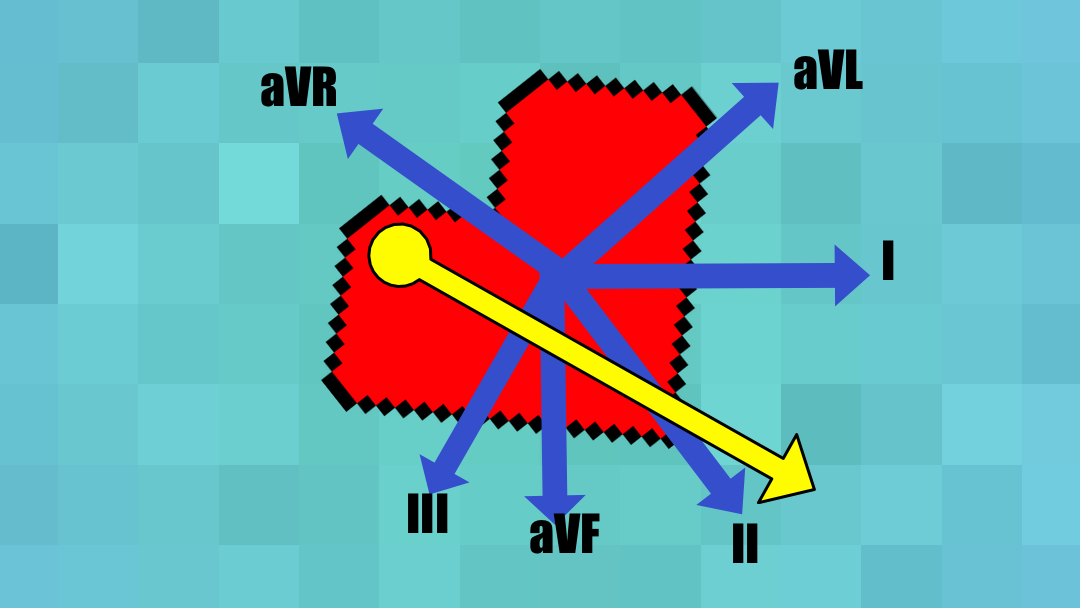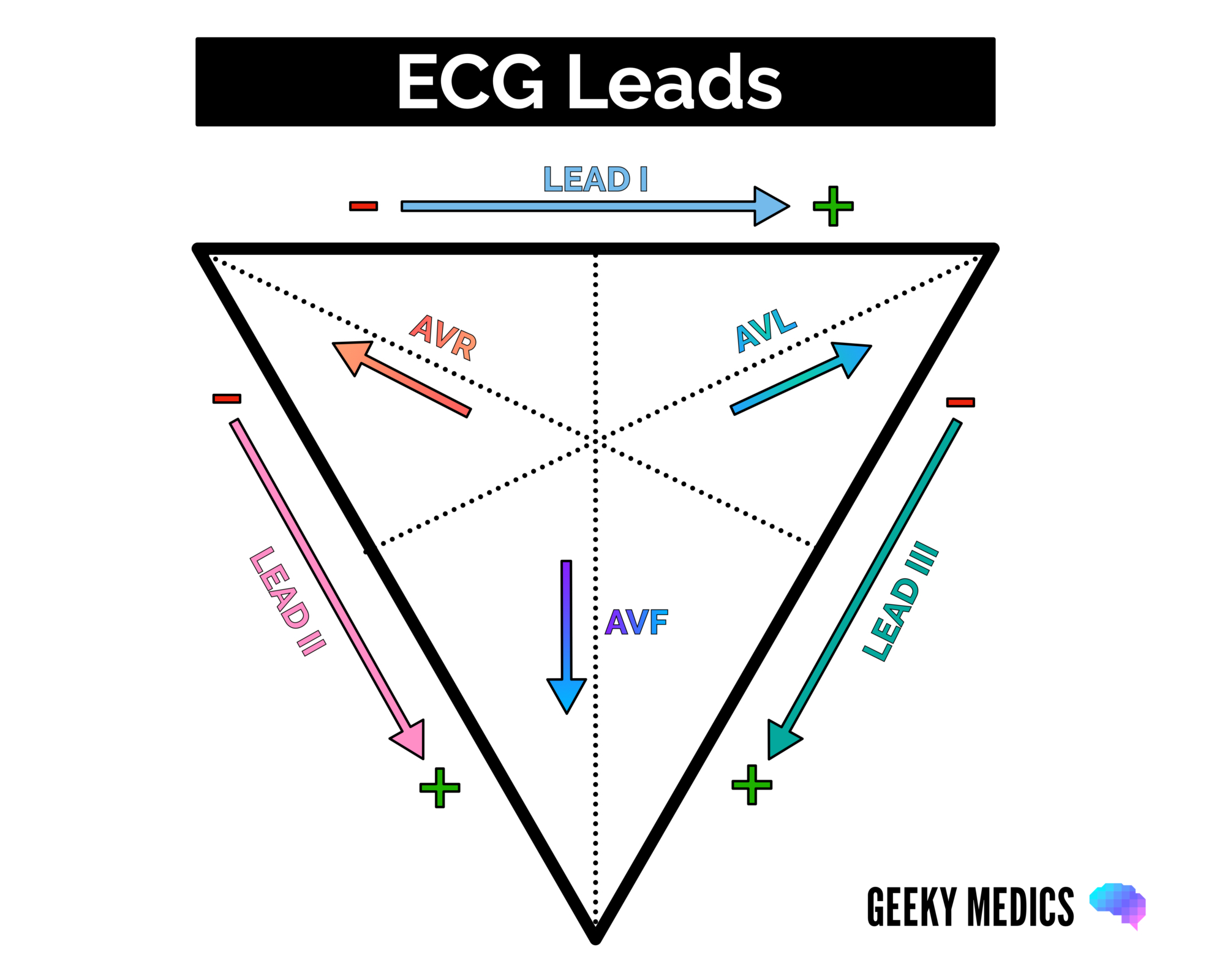- 📖 Geeky Medics OSCE Book
- ⚡ Geeky Medics Bundles
- ✨ 1300+ OSCE Stations
- ✅ OSCE Checklist PDF Booklet
- 🧠 UKMLA AKT Question Bank
- 💊 PSA Question Bank
- 💉 Clinical Skills App
- 🗂️ Flashcard Collections | OSCE, Medicine, Surgery, Anatomy
- 💬 SCA Cases for MRCGP
To be the first to know about our latest videos subscribe to our YouTube channel 🙌
What is cardiac axis?
Cardiac axis represents the overall direction of electrical activity as it spreads through the cardiac conduction system. In other words, it represents the net effect of all generated action potentials within the heart.
Whenever the net direction of electrical activity is towards a particular ECG lead you see a positive deflection in that lead on the ECG.
Whenever the net direction of electrical activity is away from a particular ECG lead you see a negative deflection in that lead on the ECG.
Normal cardiac axis
In healthy individuals, you would expect the cardiac axis to lie between -30° (aVL) and +90º (aVF).
In the context of normal cardiac axis, the net direction of electrical activity spreads towards leads I, II and III (the yellow arrow below). As a result, you see a positive deflection in all of these leads, with lead II showing the most positive deflection as it is the most closely aligned to the overall direction of electrical spread.
You would expect to see the most negative deflection in aVR, due to aVR looking at the heart in the opposite direction.
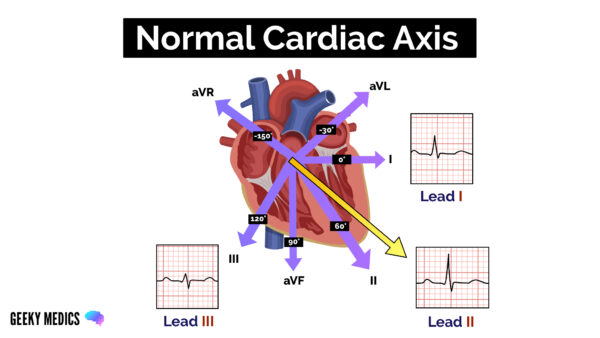
Right axis deviation
Right axis deviation (RAD) involves the direction of depolarisation being distorted to the right (between +90º and +180º).
The most common cause of RAD is right ventricular hypertrophy. Extra right ventricular tissue results in a stronger electrical signal being generated by the right side of the heart. This causes the deflection in lead I to become negative and the deflection in lead aVF/III to be more positive.
RAD is commonly associated with conditions which result in the development of right ventricular hypertrophy such as pulmonary hypertension. RAD can, however, be a normal finding in very tall individuals.
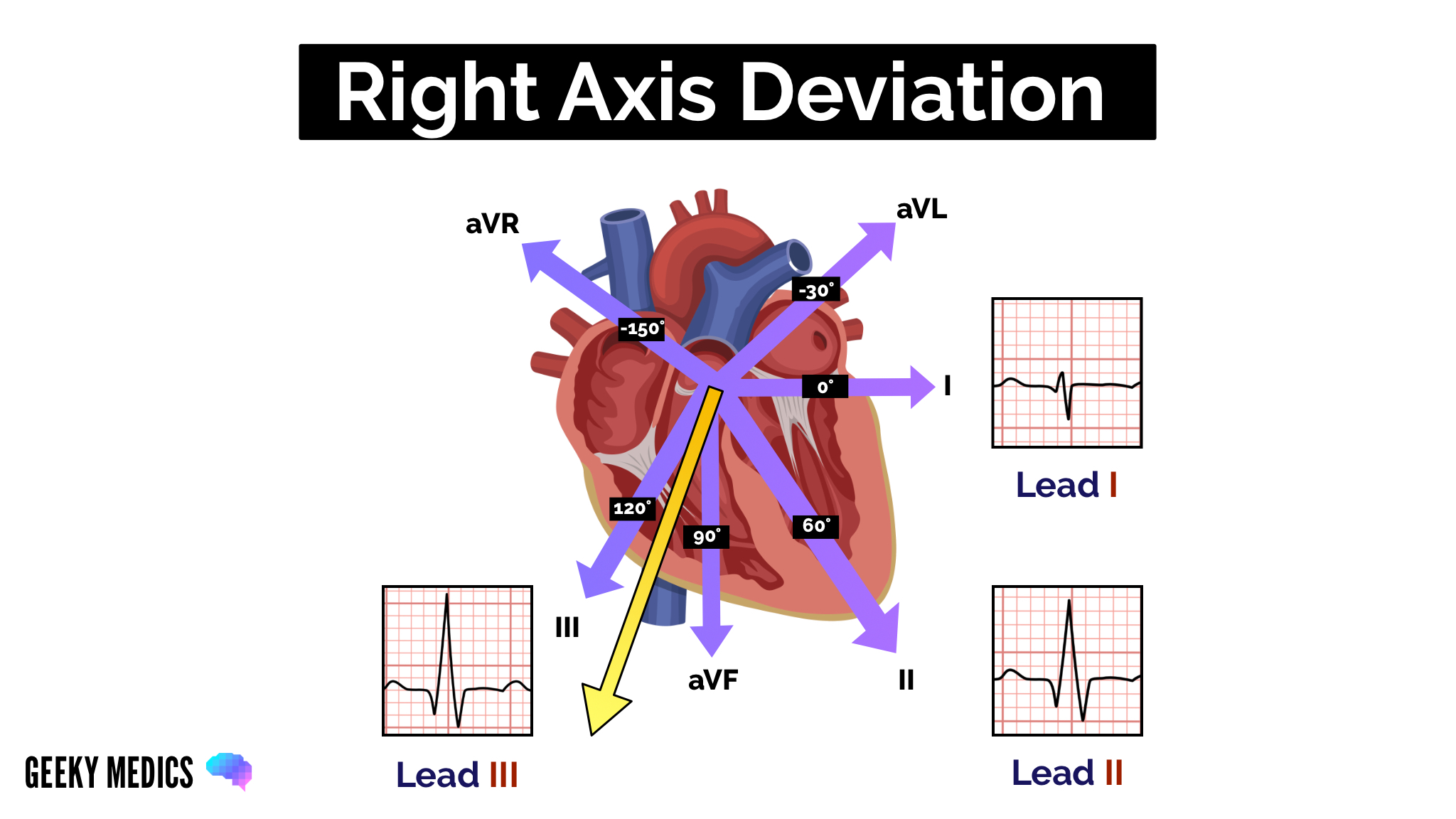
Left axis deviation
Left axis deviation (LAD) involves the direction of depolarisation being distorted to the left (between -30º and -90º).
This results in the deflection of lead III becoming negative (this is only considered significant if the deflection of lead II also becomes negative).
LAD is usually caused by conduction abnormalities.
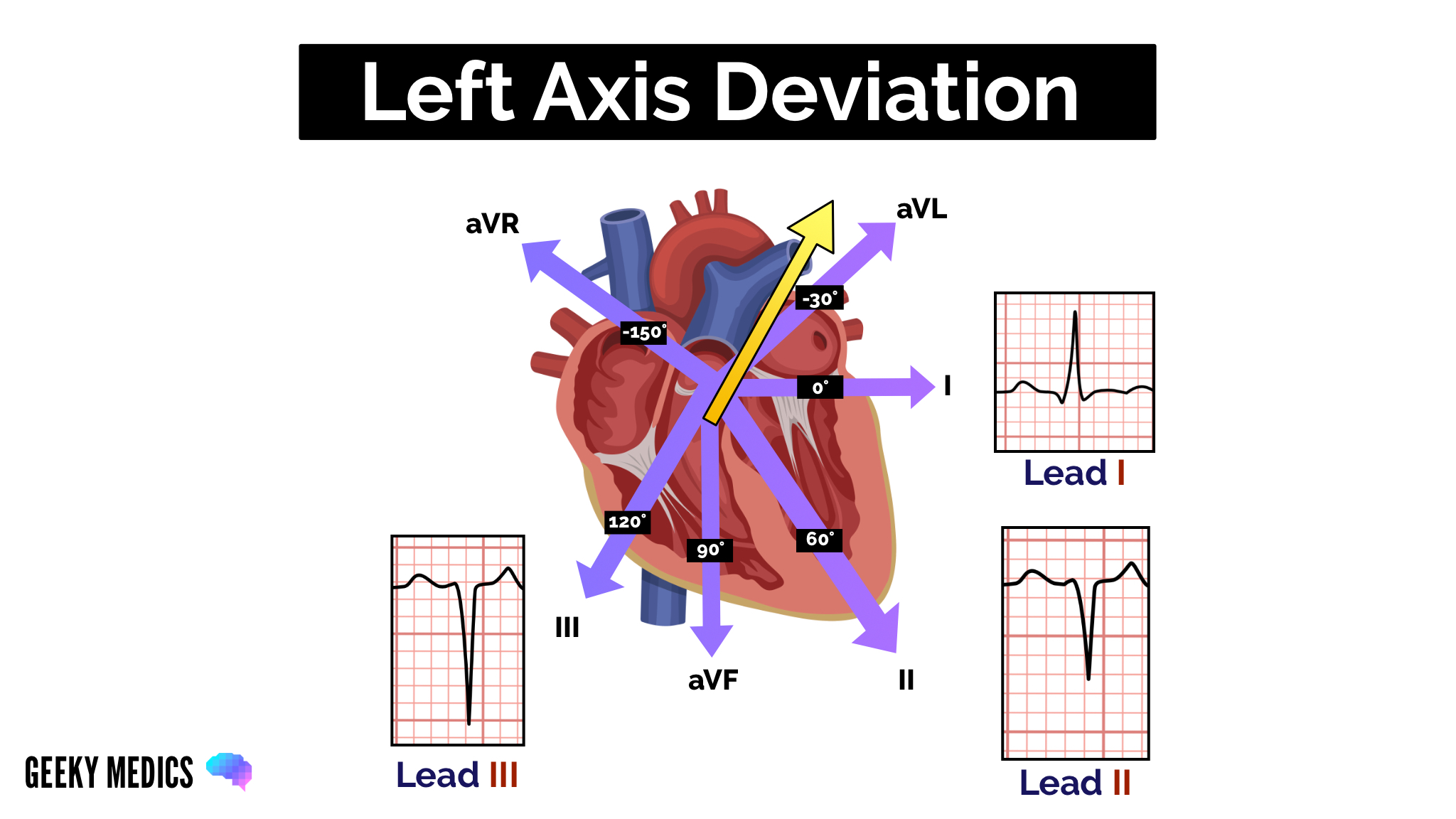
Reviewer
Dr Matthew Jackson
Consultant Interventional Cardiologist


